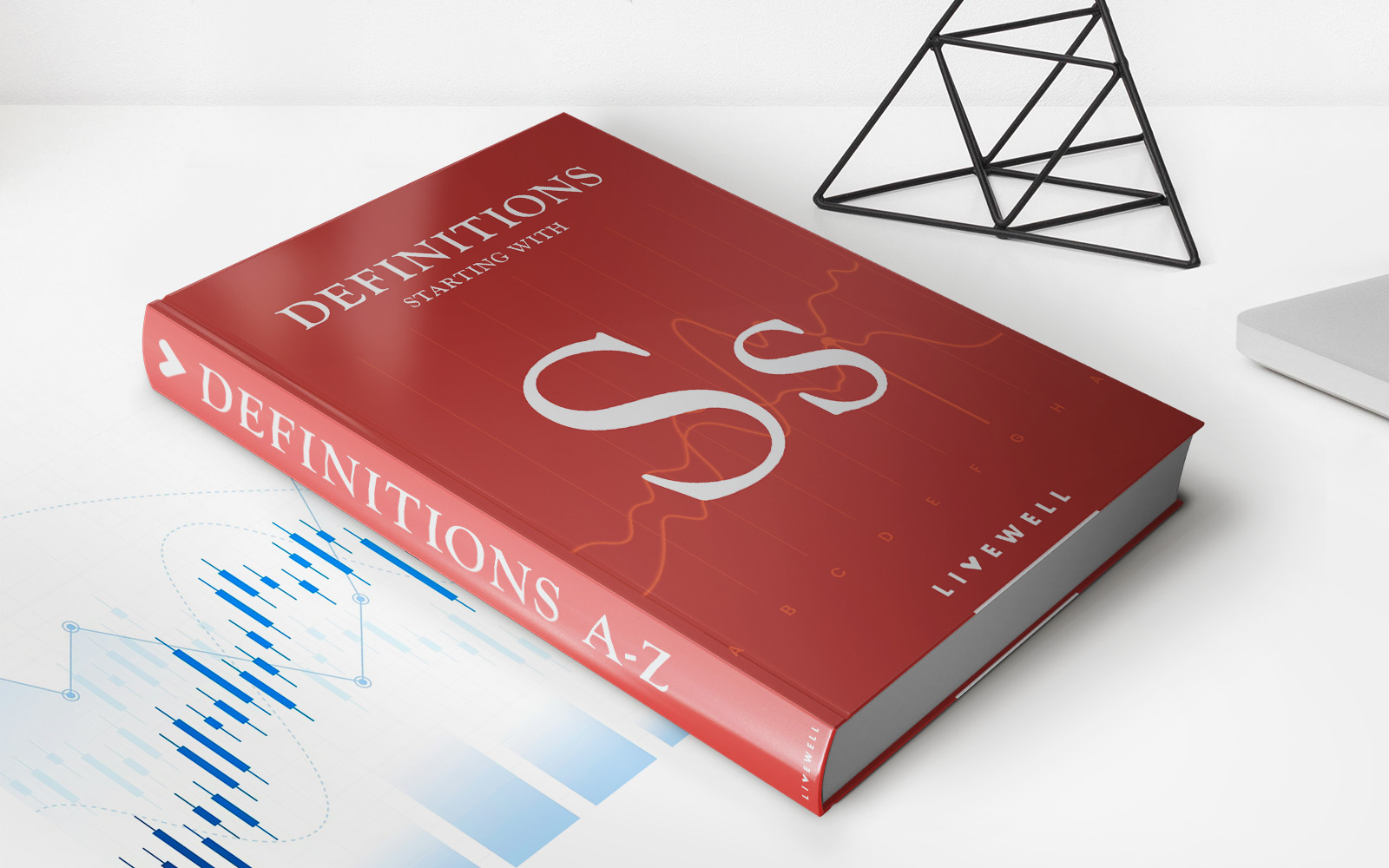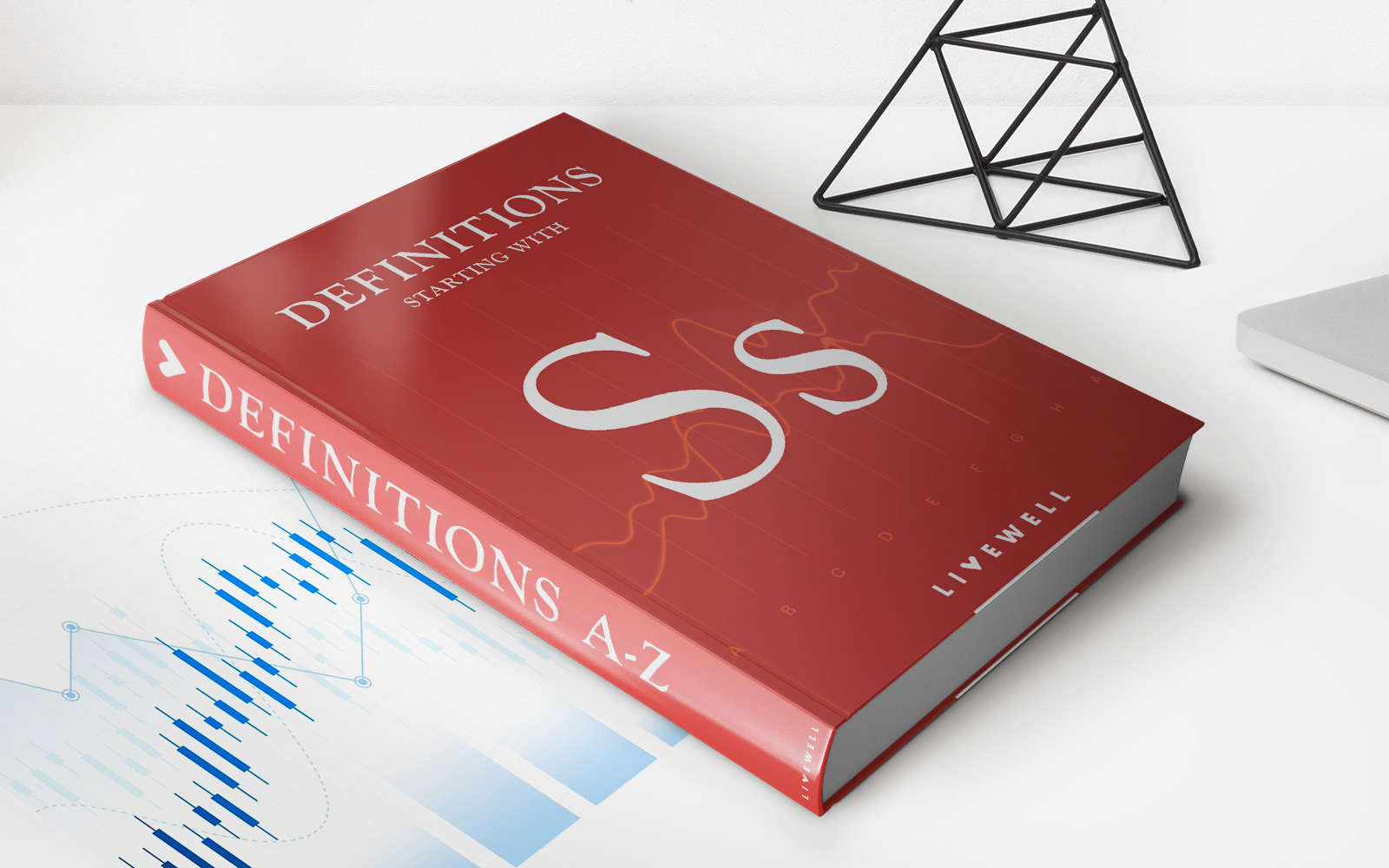

Finance
What Does LAE Stand For In Insurance
Published: November 14, 2023
Discover the meaning of LAE in the finance industry and its importance in insurance. Learn how LAE impacts insurance claims and financial assessments.
(Many of the links in this article redirect to a specific reviewed product. Your purchase of these products through affiliate links helps to generate commission for LiveWell, at no extra cost. Learn more)
Table of Contents
Introduction
When it comes to understanding the intricacies of insurance, there are numerous acronyms and terms that can be confusing to navigate. One such acronym is LAE, which stands for “Loss Adjustment Expense.” In the world of insurance, LAE plays a crucial role in ensuring fair and accurate claims settlement, but its significance can often be overlooked or misunderstood.
LAE refers to the expenses incurred by an insurance company in investigating and settling a claim. These expenses are in addition to the actual cost of the claim itself. While the primary focus of insurance is to indemnify policyholders for losses, LAE serves a vital purpose in streamlining the claims process and providing support and assistance to policyholders during their time of need.
Understanding the nature and purpose of LAE in insurance is essential for policyholders and industry professionals alike. In this article, we will delve into the definition, components, factors affecting LAE, as well as its importance in the insurance industry.
So, what exactly does LAE entail? Let’s explore further.
Definition of LAE
Loss Adjustment Expense (LAE) in insurance refers to the costs incurred by insurance companies to investigate and settle claims. It encompasses the expenses associated with the handling, adjustment, and resolution of claims, separate from the actual amount paid out to the policyholder for the loss. LAE can include various components, such as the salaries and fees of claims adjusters, legal expenses, expert fees, and other administrative costs incurred during the claims process.
Insurance companies allocate a portion of their premiums for LAE to ensure that they have sufficient resources to investigate and resolve claims effectively. By separating the loss amount from the LAE, insurers can accurately assess the financial impact of claims on their profitability and maintain transparency in the claims settlement process.
The calculation and estimation of LAE are essential for insurance companies to set appropriate premium levels and maintain their financial stability. Accurate estimation of LAE allows insurers to determine the reserves needed to cover future claims, ensuring they have sufficient funds to fulfill their policy obligations.
It’s important to note that LAE is specific to the insurance industry and should not be confused with the actual loss amount or the cost of the claim. The actual loss amount represents the financial compensation paid to policyholders for the damages or losses they have suffered, while LAE encompasses the additional expenses incurred in the claims handling process.
Now that we have a clear understanding of the definition of LAE, let’s explore its purpose in the insurance industry.
Purpose of LAE in Insurance
The primary purpose of Loss Adjustment Expense (LAE) in insurance is to ensure fair and efficient claims settlement. LAE serves as a critical component of the claims process, providing resources and support to policyholders when they experience a loss. Understanding the purpose of LAE is essential for both policyholders and insurance professionals.
One of the key purposes of LAE is to facilitate the investigation of insurance claims. When a policyholder files a claim, an insurance company assigns adjusters to assess the extent of the loss and determine the coverage provided under the policy. These adjusters play a crucial role in gathering evidence, evaluating the claim, and negotiating a fair settlement with the policyholder.
LAE also covers the expenses incurred in resolving any legal aspects of a claim. In some cases, disputes or disagreements may arise between the policyholder and the insurance company regarding the coverage or settlement amount. In such situations, legal counsel may be required to provide guidance, negotiate settlements, or even represent the insurance company in court if necessary. These legal expenses fall under the umbrella of LAE.
Additionally, LAE includes the costs of employing experts or specialists to assess complex or specialized claims. For example, in a property insurance claim involving structural damage, an insurance company may need to hire engineers or construction experts to evaluate the extent of the damage and determine the appropriate compensation. These expert fees are part of the LAE component.
Another purpose of LAE is to cover the administrative costs associated with the claims process. This includes the salaries of claims adjusters, administrative staff, and the overhead expenses incurred in managing and processing claims efficiently. By having a designated budget for LAE, insurance companies can allocate resources effectively and ensure that policyholders receive prompt and efficient claims service.
Overall, the purpose of LAE is to provide policyholders with the necessary support and resources to navigate the claims process. By separating the actual loss amount from the expenses incurred in investigating and settling claims, insurers can accurately assess their financial exposure and ensure that policyholders receive fair and timely compensation.
Next, let’s explore the components that make up LAE.
Components of LAE
Loss Adjustment Expense (LAE) in insurance is composed of various components that encompass the expenses incurred in the investigation and settlement of claims. These components contribute to the overall costs associated with the claims process. Understanding these components is crucial for insurance professionals and policyholders alike.
1. Salaries and Fees: One of the primary components of LAE is the salaries and fees of claims adjusters. These professionals play a vital role in assessing the validity of claims, evaluating the extent of losses, and negotiating settlements with policyholders. The salaries and fees of claims adjusters represent a significant portion of the expenses incurred in handling claims.
2. Legal Expenses: In some cases, the resolution of a claim may involve legal proceedings. Insurance companies may employ legal counsel to provide guidance, represent their interests, and negotiate settlements if disputes arise. The legal expenses incurred during the claims process, including attorney fees and court costs, are included in the LAE component.
3. Expert Fees: Certain claims require the expertise of specialists or consultants to assess specific aspects of the loss. For example, in a complex medical malpractice claim, an insurance company may need to hire medical experts to evaluate the standard of care provided. The fees associated with these experts are included in the LAE component.
4. Administrative Costs: LAE also encompasses administrative expenses incurred in managing and processing claims. This includes the overhead costs of claims departments, such as rent, utilities, and technology expenses. Additionally, it covers the costs of support staff involved in claim processing, such as administrative assistants and claims coordinators.
5. Investigation and Evaluation: Another component of LAE is the cost of investigating and evaluating claims. This includes expenses related to gathering evidence, conducting interviews, and performing necessary inspections or appraisals to determine the extent of the loss. These costs are crucial in determining the coverage and settlement amount.
6. Settlement and Payment: Finally, the process of settling a claim and making payments to the policyholder incurs additional expenses. This includes the costs associated with preparing settlement documents, issuing checks, and processing the financial transactions required to complete the claims settlement process.
By understanding the various components of LAE, insurance professionals can allocate the necessary resources to handle claims effectively and ensure a smooth claims management process. For policyholders, understanding these components provides transparency regarding the expenses incurred during the claims process.
Now that we have explored the components that make up LAE, let’s examine the factors that can influence its magnitude.
Factors Affecting LAE
Loss Adjustment Expense (LAE) in insurance is influenced by various factors that can impact the magnitude and allocation of expenses incurred during the claims process. Understanding these factors helps insurance professionals and policyholders anticipate and manage the costs associated with LAE.
1. Complexity and Severity of the Claim: The complexity and severity of a claim play a significant role in determining the LAE. Claims involving intricate legal or technical issues, such as those in professional liability or product liability cases, often require more extensive investigation and expert evaluation. These complexities can contribute to higher LAE due to the additional resources and expertise required.
2. Dispute Resolution: Disputes that arise during the claims process can impact the LAE. When there is a disagreement between the policyholder and the insurance company concerning coverage, liability, or the settlement amount, it may necessitate legal intervention or alternative dispute resolution methods. Resolving these disputes can result in higher legal expenses and increased LAE.
3. Regulatory Requirements: Regulatory requirements imposed by governmental or industry bodies can influence the LAE. Compliance with regulations, such as reporting obligations, may require additional administrative efforts and expenses. Insurance companies need to allocate resources to ensure compliance and avoid penalties or legal consequences, thereby impacting the LAE.
4. Geographic Location: The geographic location of the insured property or individuals can also affect the LAE. Areas prone to natural disasters or higher risks may require more thorough inspection and evaluation of claims, resulting in increased expenses. Additionally, the availability of local experts and adjusters can influence the cost of LAE in different regions.
5. Claims Handling Processes and Technology: The efficiency and automation of an insurance company’s claims handling processes can have an impact on LAE. Streamlined and technology-driven systems can help reduce administrative costs and improve the speed and accuracy of claims processing, potentially lowering the overall LAE.
6. Policyholder Communication and Support: Effective communication and support provided to policyholders during the claims process can impact LAE. Clear and timely communication can help facilitate the investigation and settlement of claims, minimizing the need for additional expenses due to confusion or delays. Providing policyholders with guidance and assistance can help streamline the process and improve customer satisfaction.
By considering these factors, insurance professionals can proactively manage and allocate resources to efficiently handle claims and control the magnitude of LAE. Understanding these factors also allows policyholders to have realistic expectations regarding the expenses that may be incurred during the claims process.
Now that we have explored the factors that can affect LAE, let’s delve into the importance of LAE in the insurance industry.
Importance of LAE in Insurance
Loss Adjustment Expense (LAE) plays a crucial role in the insurance industry, serving important functions that contribute to the fair and effective handling of claims. Understanding the importance of LAE is essential for insurance professionals, as well as policyholders seeking prompt and efficient claims settlement.
1. Fair Claims Settlement: LAE ensures that insurance companies can thoroughly investigate and evaluate claims, aiding in the fair settlement of policyholders’ losses. By having dedicated resources and expertise, insurers can verify the validity of claims, assess the extent of the loss, and negotiate a fair settlement amount. This promotes transparency and trust between the insurance company and the policyholder.
2. Policyholder Support: LAE provides policyholders with the necessary support and assistance during the claims process. By allocating resources for claims adjusters, legal counsel, and experts, insurers can guide policyholders through the complex process of filing a claim, answering their questions, and addressing their concerns. This support helps policyholders navigate the claims process smoothly, ensuring a positive customer experience.
3. Accurate Assessments and Reserves: LAE allows insurance companies to accurately assess the financial impact of claims on their operations. By segregating the expenses associated with claims from the actual loss amounts, insurers can evaluate their profitability and financial stability. Accurate assessments of LAE also enable insurers to set aside appropriate reserves to cover future claims, ensuring their ability to fulfill policy obligations.
4. Efficient Claims Handling: Proper allocation of LAE resources enables insurance companies to streamline the claims handling process, resulting in quicker payouts to policyholders. Adequate staffing and technology infrastructure can expedite the investigation, evaluation, and settlement of claims, reducing delays and enhancing customer satisfaction.
5. Legal and Compliance Requirements: LAE encompasses the costs associated with legal support and regulatory compliance, ensuring that insurance companies meet their obligations. It allows insurers to manage legal disputes effectively, engaging legal counsel when necessary and ensuring compliance with relevant laws and regulations. By allocating resources for legal expenses, insurers can protect their interests while upholding their responsibilities to policyholders.
6. Data Analysis and Improvement: LAE data can provide valuable insights to insurance companies for continual improvement. By analyzing trends and patterns in LAE expenses, insurers can identify areas of inefficiency or opportunities for cost reduction. This data-driven approach helps insurers optimize their claims processes, reduce expenses, and enhance overall operational effectiveness.
Overall, the importance of LAE in insurance cannot be understated. It promotes fairness in claims settlement, provides critical support to policyholders, enables accurate financial assessments, ensures compliance with regulations, and drives efficiency in claims handling. By allocating appropriate resources to LAE, insurance companies can enhance their reputation, strengthen customer relationships, and maintain long-term sustainability.
Now, let’s explore some examples that illustrate the concept and application of LAE.
Examples of LAE
Loss Adjustment Expense (LAE) in insurance can vary depending on the nature of the claim, the policyholder, and other factors. Let’s explore a few examples to illustrate how LAE can manifest in different insurance scenarios:
1. Automobile Insurance: Suppose a policyholder is involved in a car accident and files a claim with their automobile insurance company. In this case, the LAE component may include expenses related to sending an adjuster to assess the damage to the vehicle, obtaining statements from witnesses, and coordinating with repair shops or medical professionals to evaluate injuries. It may also involve legal fees if there is a dispute over liability or settlement amount.
2. Property Insurance: If a homeowner experiences a loss due to a fire and files a claim with their property insurance company, LAE may encompass the costs of hiring experts to assess the cause and extent of the fire damage. It may also include the fees of adjusters who evaluate the cost of repairs or replacement, legal expenses for negotiating with contractors or handling property damage claims, and administrative costs related to processing the claim.
3. Professional Liability Insurance: In the case of a malpractice claim against a healthcare professional, such as a doctor or dentist, LAE may involve hiring medical experts to evaluate the standard of care provided. Legal expenses may arise if the claim leads to a lawsuit, requiring representation in court. Additionally, there may be administrative costs associated with documenting the claim and coordinating communication between the insurance company and the policyholder.
4. Workers’ Compensation Insurance: For a workplace injury claim, LAE may encompass expenses related to investigating the incident, evaluating the extent of the injury and its impact on the employee’s ability to work, and coordinating with healthcare providers for medical assessments. Legal fees may be incurred if there is a dispute over the claim or if additional compensation is sought. Administrative costs for claims processing and documentation can also be part of the overall LAE.
These examples highlight the different components and expenses that fall under the umbrella of LAE in various insurance scenarios. It is important for insurance professionals and policyholders to be aware of the potential LAE costs associated with different types of claims to ensure a smooth and efficient claims process.
Now, let’s wrap up with a concluding summary of LAE in insurance.
Conclusion
Loss Adjustment Expense (LAE) is an essential component of the insurance industry, playing a vital role in ensuring fair and efficient claims settlement. It encompasses the expenses incurred by insurance companies in investigating, evaluating, and settling claims, separate from the actual loss amount. By understanding the definition, purpose, components, factors affecting, and importance of LAE, insurance professionals and policyholders can navigate the complex claims process more effectively.
LAE serves several critical functions in the insurance ecosystem. It promotes fair claims settlement by providing resources for thorough investigation and evaluation, ensuring policyholders receive fair compensation for their losses. It also supports policyholders by offering guidance and assistance during the claims process, enhancing customer satisfaction and trust.
The components of LAE include salaries and fees of claims adjusters, legal expenses, expert fees, administrative costs, investigation and evaluation expenses, and settlement and payment costs. These components reflect the various expenses incurred in handling and resolving claims.
Several factors can influence the magnitude of LAE, including the complexity and severity of claims, dispute resolution processes, regulatory requirements, geographic location, claims handling processes and technology, and policyholder communication and support. Understanding these factors enables insurance professionals to proactively manage and allocate resources, optimizing the claims process and controlling LAE costs.
The importance of LAE in insurance cannot be overstated. It ensures fair claims settlement, provides policyholder support, facilitates accurate assessments and reserve allocation, enhances claims handling efficiency, and ensures compliance with legal and regulatory requirements. By allocating resources effectively to LAE, insurance companies can maintain their financial stability, improve customer satisfaction, and foster long-term relationships with policyholders.
In conclusion, a comprehensive understanding of LAE in insurance is crucial for all stakeholders. By recognizing its significance and considering its various aspects, insurance professionals and policyholders can navigate the claims process more effectively and contribute to a fair and efficient insurance industry.














